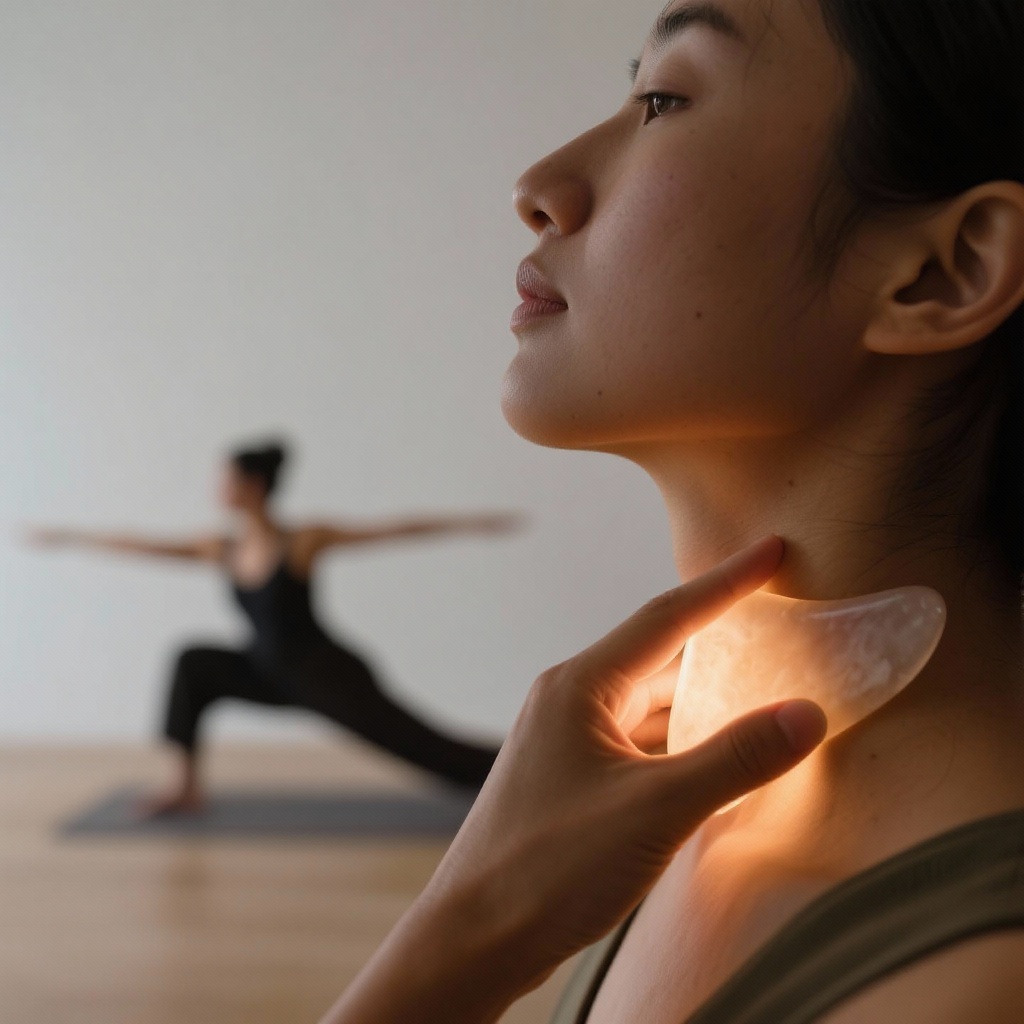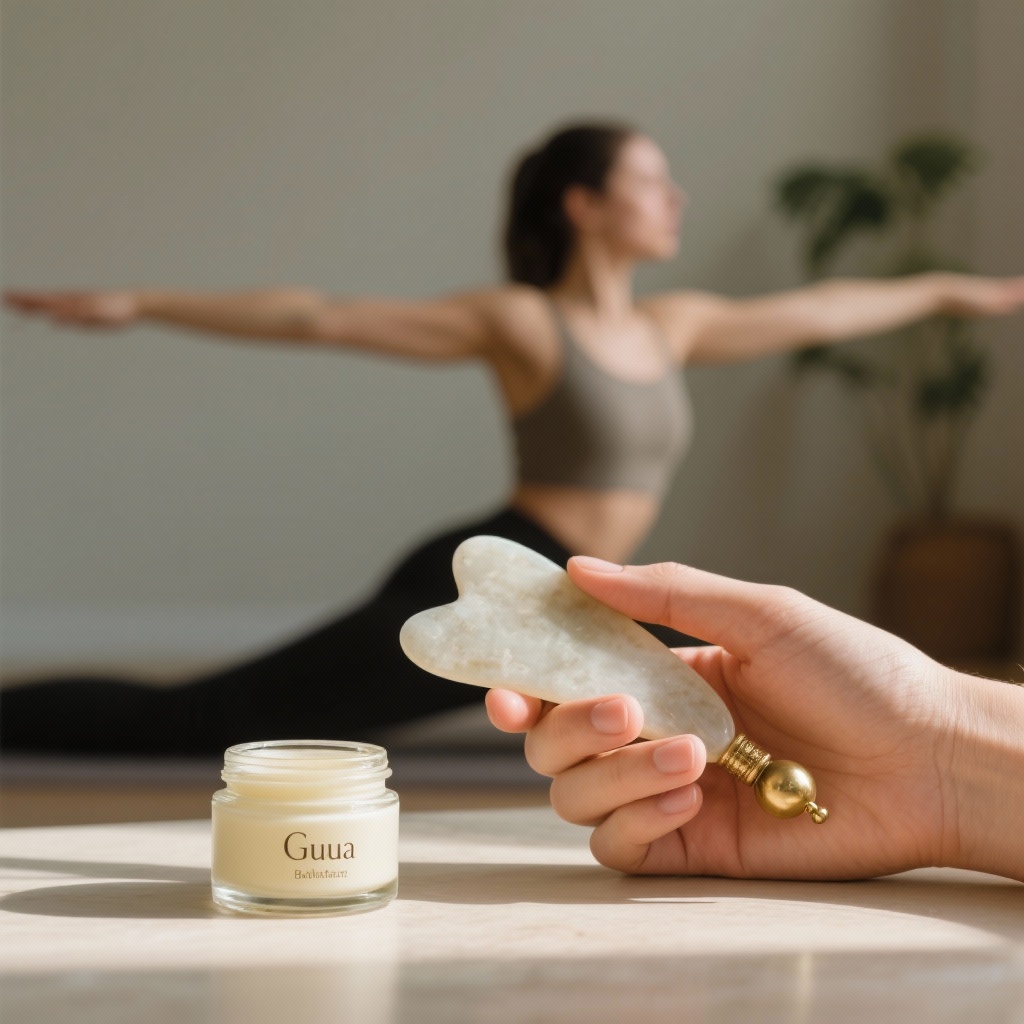Discover how Gua Sha Self-Rehabilitation empowers you to take control of your wellness journey. This innovative approach perfectly integrates traditional Chinese healing with modern rehabilitation concepts. It transforms passive treatment into an active, self-guided path to better health.
Holistically Blending Ancient Wisdom with Modern Recovery: Embracing Gua Sha Self-Rehabilitation
Gua Sha focuses on clearing energy pathways and balancing vital energy flow. Self-rehabilitation emphasizes active participation and restoring full physical function. Combining these approaches truly offers a “root and branch” solution. It not only alleviates symptoms but also significantly boosts the body’s natural healing abilities. This powerful Gua Sha Self-Rehabilitation method integrates Traditional Chinese Medicine recovery with an **active recovery strategy**.

Prepare Your Body: Optimize Healing Pathways
Gua Sha therapy gently stimulates specific energy pathways or meridians. This process dramatically improves local blood circulation and reduces inflammation. It creates an ideal physiological environment for subsequent rehabilitation exercises. Muscles then receive ample blood supply during your training sessions. This vital nourishment makes movements more coordinated and noticeably more powerful. Rehabilitation effectively reinforces Gua Sha’s benefits. It also helps prevent energy blockages from recurring, much like clearing a persistent traffic jam in your body. Learn more about Qi & Blood flow.
Strategize Your Sessions: Maximize Therapeutic Timing
Begin your session with Gua Sha treatment to clear relevant pathways. This immediately helps relieve localized tension and pain. Afterward, transition directly into targeted rehabilitation exercises. These might include specific range of motion drills or muscle-strengthening routines. This strategic timing maximizes the “optimal treatment window” after Gua Sha. It ensures your body is primed for effective functional restoration.
Tailor Your Treatment: Target Specific Ailments
Craft individualized programs based on your unique health conditions. For those with neck discomfort, first perform Gua Sha on the neck and shoulder area. Then, proceed with specific cervical spine function exercises. Individuals experiencing lower back pain should initially Gua Sha their lower back meridians. Following this, focus on strengthening exercises for core muscles. Explore the benefits of acupoints.
Empower Your Hands: Master Self-Care Techniques
This combined approach significantly empowers patients with practical self-healing skills. After learning basic Gua Sha techniques, you can easily practice them at home. Simple rehabilitation movements can complement your daily routine. This enables consistent self-management and sustained recovery progress. It’s a proactive way to maintain your well-being.
Boost Your Results: Enhance Pain Relief
Research shows that incorporating appropriate exercise after Gua Sha extends therapeutic effects. It also substantially improves overall rehabilitation quality (PMID: 32103859). The endorphins released during exercise synergize beautifully with Gua Sha’s analgesic actions. This creates a remarkably potent and lasting cumulative effect.
Prevent Future Pain: Build Lasting Stability
Regularly combining Gua Sha with targeted training strengthens local muscles significantly. This also improves joint stability, fundamentally preventing disease recurrence. This proactive recovery model strongly aligns with modern preventive medicine principles. This **holistic healing regimen** combines ancient practice with modern fitness, promoting deep **Gua Sha Self-Rehabilitation** benefits.

Practice Safely: Maximize Benefits
Apply Gua Sha pressure moderately, avoiding any excessive stimulation. This prevents negatively impacting your subsequent training. Rehabilitation movements should progress gradually and thoughtfully. Avoid rushing for immediate results. A frequency of 2-3 times weekly is generally ideal for this combined approach. Discover more about Gua Sha therapy.
Bridge Cultures: Understand Holistic Healing
This integrated method helps Westerners more easily grasp TCM’s holistic philosophy. Visible functional improvements clearly demonstrate TCM’s core principle. It highlights mobilizing the body’s inherent self-healing capabilities. This **wellness partnership** bridges Eastern and Western medical philosophies effectively, demonstrating the power of **Gua Sha Self-Rehabilitation**.
In sum, Gua Sha Self-Rehabilitation embodies TCM’s profound “preventative medicine” wisdom. This approach revitalizes traditional therapies within modern rehabilitation practices. It represents a powerful, integrated path to lasting health and vitality.
References
- [The Effectiveness of Gua Sha on Musculoskeletal Pain: A Systematic Review and Meta-Analysis.](https://pubmed.ncbi.nlm.nih.gov/32103859/)
- [Exercise is medicine—a global health initiative.](https://pubmed.ncbi.nlm.nih.gov/29707116/)
- [Self-management support for people with chronic conditions: A review of the literature.](https://pubmed.ncbi.nlm.nih.gov/29427845/)
Quick Check & Instant Relief
Self-test (3 seconds): If you’re noticing persistent stiffness or minor aches in your neck or shoulders, preventing comfortable movement…
Self-rescue (30 seconds): …immediately grab your Gua Sha tool and apply a small amount of balm. Gently scrape along the tense area for 30 seconds. Then, perform 3 slow, controlled shoulder rolls to each side. You’ll feel a noticeable release!
Medical Disclaimer:This article is for educational use only and is not a substitute for professional medical advice.